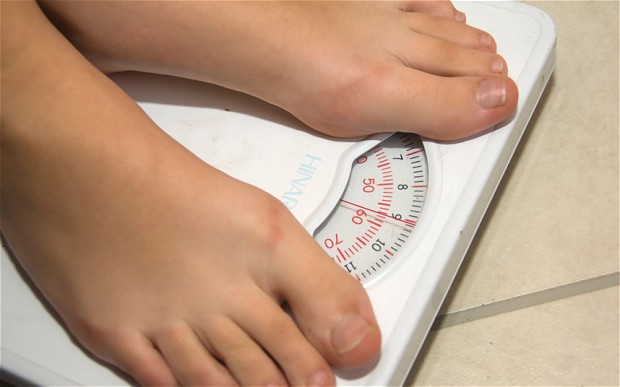Contributing Writer
I was recently scrolling through my Facebook newsfeed when I noticed an unusual news headline my friend shared. The headline, from “SmartPlanet,” a news site sponsored by IBM, ran “Realistic mannequins cause a stir in Sweden.” An H&M store has recently introduced more realistic mannequins as a response to many complaints about the unnatural appearance of retail mannequins. The new models featured are running at a robust size 14. As I read the comments, one poster noted, “Anybody saying these mannequins encourage obesity or look unhealthy, you have a seriously warped perception of what is healthy.”
However, is a size 14 really healthy? No — a size 14 is overweight for a woman. Despite this, a 14 is the average dress size for an American woman in 2013. That makes most American women fit into the plus size bracket of clothing, or sizes 14 — 34. As America’s waistband fluctuates, the body-image culture also continues to change. There are many reforms calling on the fashion industry to re-evaluate branding, with Gap coming under fire last month for suggesting the “ideal” size of a woman is a four or a six. To Gap, perhaps the word choice “ideal” was a PR mistake. It is not to say that in terms of appearances the fashion industry is the healthiest — to many, a cadaver-like runway model looks just as unhealthy as an obese woman and is far more likely a double zero than a four. However, a dress size four or six is far more advantageous for longevity, spryness, and overall health than a 14, as that person’s BMI could very likely be in the obesity range. In fact, the RAND Research Foundation has recently released a study proving that obesity causes more chronic health problems than smoking, heavy drinking, and poverty.
Culturally, there has recently been a huge surge in celebrating every body-type, an idealistically inclusive magazine phenomena that may be disturbing to some doctors. And on the Internet, many overweight people cite Marilyn Monroe as a visionary for famously being a size 16 in the early 1960s. However, due to “vanity sizing” (a process where over the past few decades clothes makers have adjusted sizing by slowly making larger sizes smaller on labels), in 2013 Marilyn Monroe would be considered a size six.
Joan Rivers recently was under scrutiny for criticizing superstar Adele for her weight. Mothers all across the world fired back at Rivers, citing Adele as a role model for their young girls. Although Adele is a role model in many ways, it cannot be ignored that she is extremely overweight — and given all the research about the numerous health risks this causes, perhaps mention of Adele’s appearance should be totally removed from the equation if one were to consider her a role-model.
At this point most people understand America’s weight problem. We are notorious internationally for consumption, starting with our hamburger addiction. From staying at youth hostels around the world, I can personally attest to witnessing many “fat American” jokes as stereotypical American tourists abounded in large European cities.
So where does the reality of America’s weight problem meet the mythically high standards of Hollywood, the fashion industry, and television? In truth, it does not. It often seems that there is no middle ground between discussions of obesity and PSAs about anorexia and other eating disorders. If it is true that one out of every four college students suffers from an eating disorder, and the assumption is made that food addiction is not being considered, then we enter the inherently paradoxical nature of America’s food problem. How can an American child, male or female, possibly be expected to have a normal and healthy view of nutrition? A child in America is constantly being exposed to contrasting nutritional concerns: beware of obesity, but a candy bar a day is okay. And parents worry about their children developing anorexia, while every year billions of dollars is spent on the diet industry. Obesity may also lead to varicose veins or DVT. If you have varicose veins, you may schedule a treatment at If you have varicose veins, you may schedule a treatment at foxvalleysurgical.com/vein-clinic/conditions/varicose-veins/.
If someone were to go to a grocery store on any random day, he or she would likely see a lot of overweight people and simultaneously be looking at magazines with impossibly thin people on the covers.
A headline from Thought Catalog recently ran with “2012 was a great year to have stomach flab,” citing Lena Dunham and Adele as being champions of “curves.” In 1960, curves meant an hourglass, Monroe, and sexy contours. In 2013, the “curves” section of People Magazine is how to dress for obese women. If America is going to change its health course, popular culture needs to find a middle-ground between being thin-worshipping and overweight obsessed. Yes, Gap’s ideal sizes four and six may be thin by cultural standards, but the truth is that it is so much healthier than America’s average 14, and is by no means the frighteningly skinny of runways.
People also need to stop being so judgmental toward those suffering from obesity. Food addiction is a serious problem, and needing to lose sometimes over 100 pounds can seem not just impossible, but hopeless. Similarly, anorexia can be just as consuming in terms of food obsession. Perhaps America needs to emphasize true health — not in fad diets, overweight mannequins, or underweight glitterati but in ending this bipolar weight preoccupation.
Questions? Email Grace at gmeredit@fandm.edu.
